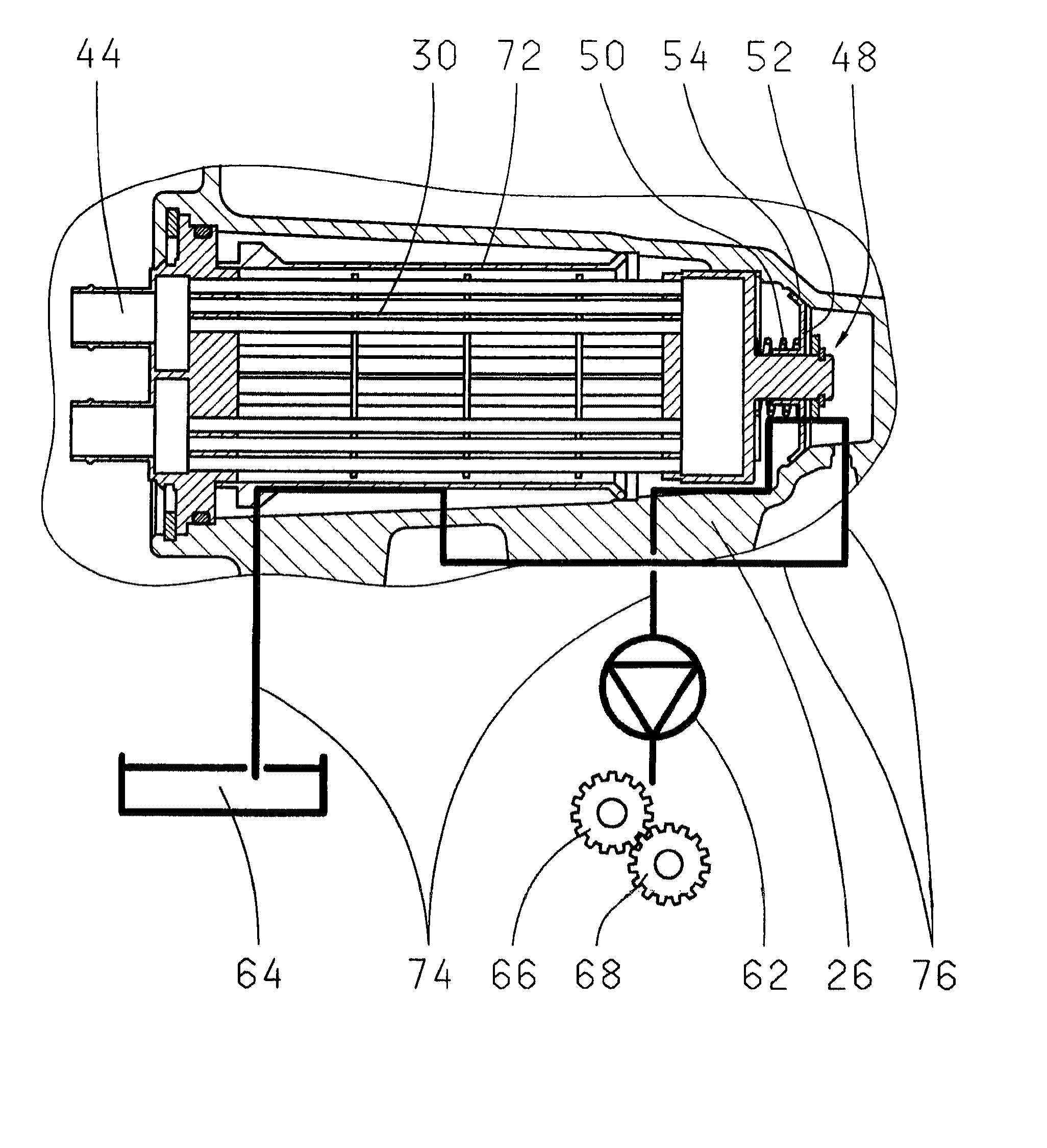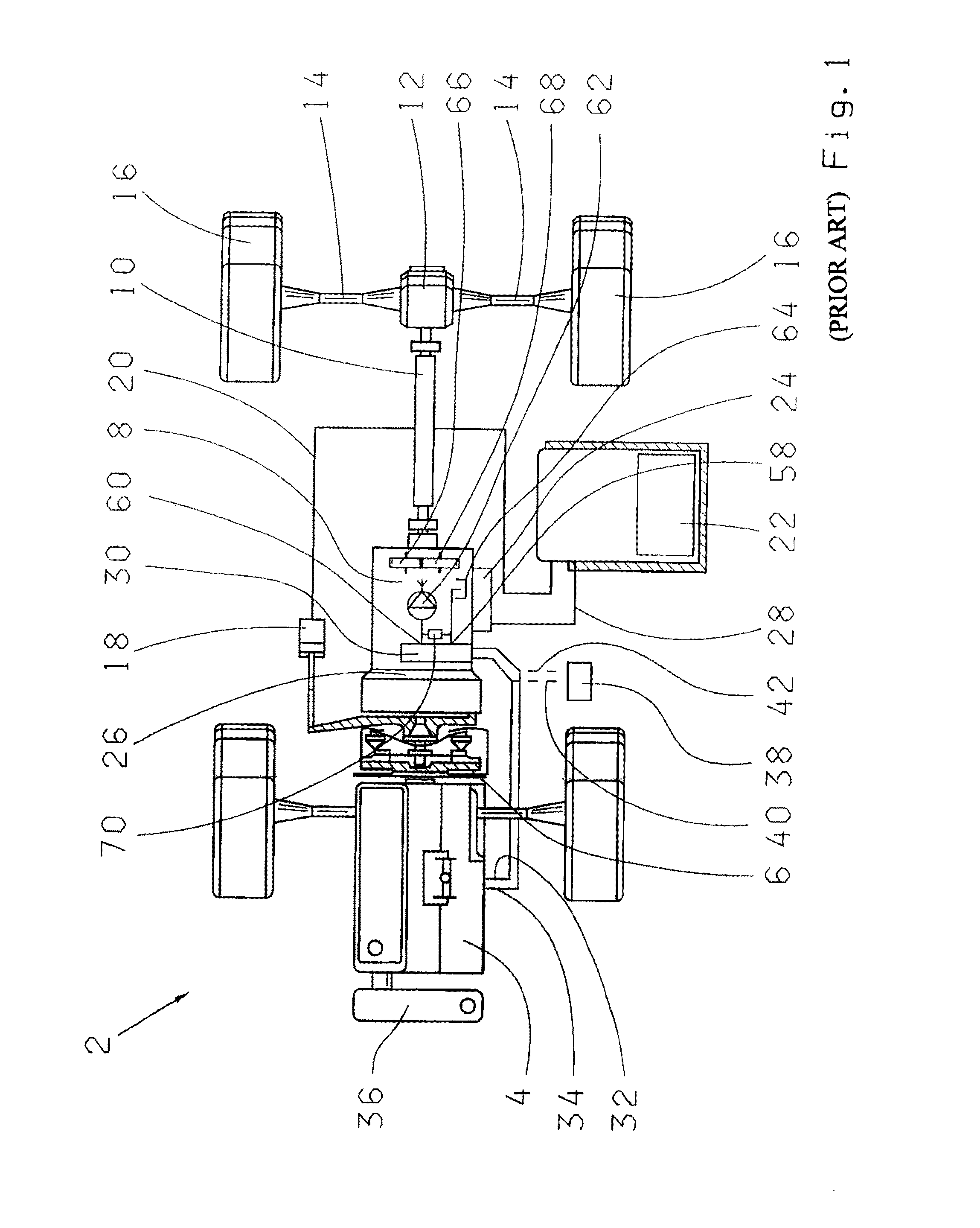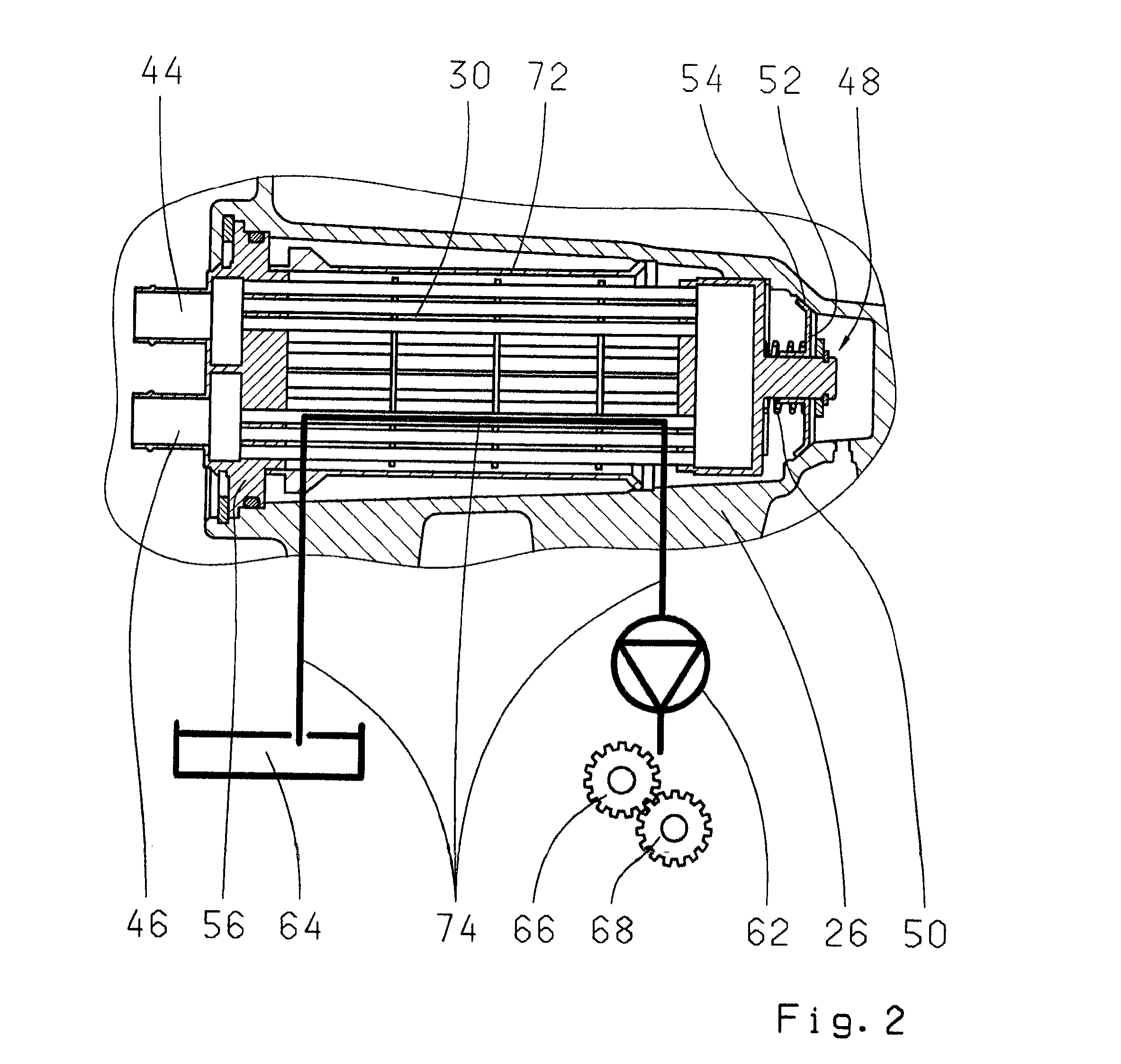Heat exchanger with integrated bypass valve
a heat exchanger and bypass valve technology, applied in the direction of indirect heat exchangers, gearing details, light and heating apparatus, etc., can solve the problems of additional manufacturing costs, constructive efforts, and additional interfaces, and achieve the effect of small pressure drop, small and compact design, and improved heat exchanger efficiency
- Summary
- Abstract
- Description
- Claims
- Application Information
AI Technical Summary
Benefits of technology
Problems solved by technology
Method used
Image
Examples
Embodiment Construction
[0025]FIG. 1 shows a schematic illustration of a vehicle 2 having a drive motor 4, which acts upon a transmission 8 by means of a friction clutch 6. The transmission 8 is connected, via an output shaft 10, to a differential 12 which drives a vehicle wheel 16 via a half axle 14. The friction clutch 6 is actuated by an actuator 18, which is connected to a control unit 22 via a signal line 20. The transmission 8 is actuated by a transmission controller 24 which is arranged on the housing 26 of the transmission 8 and is connected to the control unit 22 via a line 28. A heat exchanger 30, which is connected to the motor 4 and the coolant via two coolant lines 32 and 34, is installed in the housing 26. The warmed-up coolant is cooled down in a vehicle cooling unit 36. A cooling unit 38 which is mounted on the vehicle 2 may alternatively be connected to the heat exchanger 30, via the coolant lines 40 and 42, in which the coolant of the heat exchanger 30 is then cooled down. The heat exchan...
PUM
 Login to View More
Login to View More Abstract
Description
Claims
Application Information
 Login to View More
Login to View More - R&D
- Intellectual Property
- Life Sciences
- Materials
- Tech Scout
- Unparalleled Data Quality
- Higher Quality Content
- 60% Fewer Hallucinations
Browse by: Latest US Patents, China's latest patents, Technical Efficacy Thesaurus, Application Domain, Technology Topic, Popular Technical Reports.
© 2025 PatSnap. All rights reserved.Legal|Privacy policy|Modern Slavery Act Transparency Statement|Sitemap|About US| Contact US: help@patsnap.com



